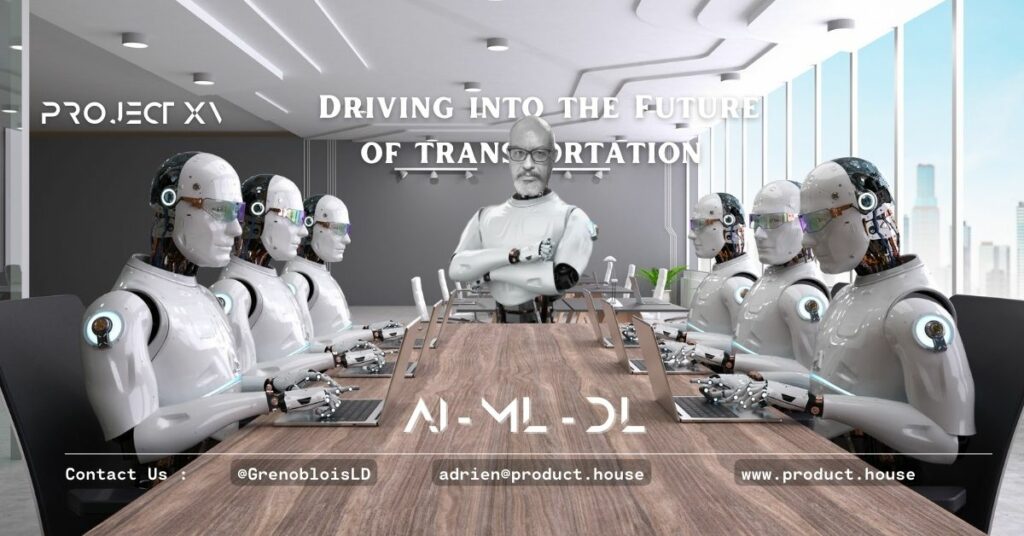AI and Air Traffic Control: Improving Safety and Efficiency of Air Travel

I. Introduction
Air travel has been a vital mode of transportation for people and goods around the world. As air travel continues to grow, the role of air traffic control has become increasingly important in ensuring the safety and efficiency of air travel. With the advent of Artificial Intelligence (AI), air traffic control has been revolutionized, making air travel safer, faster, and more efficient. This article will explore the role of AI in air traffic control, its benefits and drawbacks, and its future.
II. The role of air traffic control
Air traffic control is the process of managing the movement of aircraft in the airspace. The main objective of air traffic control is to ensure the safety of aircraft in the airspace by providing pilots with accurate information, such as weather conditions, traffic volume, and potential hazards. The air traffic controller communicates with the pilot, providing them with instructions to navigate the aircraft safely to their destination.
III. Challenges faced by air traffic control
The role of air traffic control is vital, but it is not without challenges. Some of the significant challenges faced by air traffic control include increasing air traffic, human error, and weather conditions.
a. Increasing air traffic
The increase in air traffic has been a challenge for air traffic control. As more and more planes take off and land, the risk of accidents and collisions also increases. Air traffic control needs to manage the traffic flow effectively to prevent congestion and maintain safety.
b. Human error
Human error is another challenge that air traffic control faces. Air traffic controllers are human, and they can make mistakes. Even a small mistake can have significant consequences, such as an accident. To mitigate human error, air traffic control needs to be efficient and accurate.
c. Weather conditions
Weather conditions such as fog, heavy rain, and snow can pose a significant challenge for air traffic control. Air traffic controllers need to be aware of the weather conditions and provide pilots with accurate information to make informed decisions.
IV. AI in air traffic control
AI has been a game-changer in air traffic control. AI systems can analyze data from various sources and provide air traffic controllers with accurate information to make informed decisions. AI can assist air traffic controllers in managing air traffic, reducing the risk of human error, and providing pilots with real-time weather information.
a. How AI works in air traffic control
AI in air traffic control works by analyzing data from various sources such as radar, weather sensors, and flight plans. The AI system can process the data and provide the air traffic controller with insights to make informed decisions. The AI system can also provide pilots with real-time weather information, such as turbulence and wind shear.
b. Benefits of AI in air traffic control
The benefits of AI in air traffic control are significant. AI can help air traffic controllers manage air traffic effectively, reducing the risk of congestion and collisions. AI can also help air traffic controllers provide pilots with accurate information, such as weather conditions, traffic volume, and potential hazards.
V. Examples of AI in air traffic control
a. The FAA’s NextGen program
The Federal Aviation Administration’s (FAA) Next Generation Air Transportation System (NextGen) is a program that uses AI to improve air traffic control. NextGen uses a network of ground-based sensors, satellites, and AI algorithms to provide pilots with real-time information on weather conditions and potential hazards. The system also provides air traffic controllers with better information on aircraft positions, reducing the risk of collisions and congestion.
b. EUROCONTROL’s iFACTS
EUROCONTROL’s Integrated Flow Management and Collaborative Decision-Making System (iFACTS) is another example of AI in air traffic control. iFACTS uses AI algorithms to analyze data from various sources, such as weather sensors and flight plans, to help air traffic controllers manage air traffic effectively. The system also provides pilots with real-time information on weather conditions and potential hazards.
VI. Criticisms of AI in air traffic control
While AI has many benefits in air traffic control, it is not without criticisms. Some of the criticisms of AI in air traffic control include dependence on technology and cybersecurity concerns.
a. Dependence on technology
Air traffic control is a critical function that requires a high level of reliability. While AI systems can provide accurate information and insights, they also depend on technology. A failure in the AI system could have significant consequences, such as a collision or an accident.
b. Cybersecurity concerns
Another criticism of AI in air traffic control is cybersecurity concerns. AI systems rely on data from various sources, such as radar and weather sensors. If these systems are hacked or compromised, it could have significant consequences for air traffic control.
VII. Future of AI in air traffic control
The future of AI in air traffic control is bright. AI systems will continue to revolutionize air traffic control, making air travel safer, faster, and more efficient. The integration of AI and other emerging technologies, such as 5G and the Internet of Things (IoT), will further enhance the capabilities of air traffic control.
VIII. Conclusion
In conclusion, AI has transformed air traffic control, making air travel safer, faster, and more efficient. AI systems can analyze data from various sources, providing air traffic controllers with accurate information and insights to make informed decisions. While there are criticisms of AI in air traffic control, the benefits outweigh the drawbacks. The future of AI in air traffic control is promising, and it will continue to evolve, making air travel safer and more efficient.
FAQs
- Is AI replacing air traffic controllers?
No, AI is not replacing air traffic controllers. AI is assisting air traffic controllers, providing them with accurate information and insights to make informed decisions.
- What are the benefits of AI in air traffic control?
The benefits of AI in air traffic control include managing air traffic effectively, reducing the risk of congestion and collisions, and providing pilots with real-time information on weather conditions and potential hazards.
- What are the challenges faced by air traffic control?
Some of the significant challenges faced by air traffic control include increasing air traffic, human error, and weather conditions.
- Is AI in air traffic control reliable?
AI in air traffic control is reliable, but it depends on technology. A failure in the AI system could have significant consequences, such as a collision or an accident.
- What is the future of AI in air traffic control?
The future of AI in air traffic control is promising. AI systems will continue to evolve, making air travel safer, faster, and more efficient. The integration of AI and other emerging technologies, such as 5G and the IoT, will further enhance the capabilities of air traffic control.





